How To Harvest Romaine Lettuce [2023 Update]
Do you want to know how to harvest romaine lettuce? Here is a quick and easy guide to harvesting it the RIGHT way!
I love romaine lettuce! You can have it as a quick salad or crunchy side dish to impress the in-laws (or your stomach :))
Lettuce seeds are considered to be one of the easiest to grow in a home garden, whether you live in the tropics of Malaysia or the cold rolling hills of Ireland (Yippie! Finally found a plant I can’t kill!)
However, if you want to grow romaine lettuce for the first time, you may have questions such as when to harvest romaine lettuce, when to pick romaine lettuce, or of there are different methods of harvesting romaine lettuce.
The time and method that you use to harvest your lettuce can affect its quality, as there is a risk of it getting too ripe or losing the crispy texture that it is known for.
However, when harvested correctly, romaine lettuce is suitable to eat straight from your garden.
You can harvest romaine lettuce in one of two ways.
- The first method involves removing the entire head of lettuce
- The second involves removing the outer leaves, but leaving the inner ones where they are, so that they can continue to grow.
Method 1
1-Harvest them around 60 to 75 days after the seeds have been planted.
2-Cut the base of the lettuce approximately 1 inch above the soil.
3-Pull the lettuce plant directly from the ground before trimming the roots
4-Pulling the entire romaine lettuce head out of the ground is best if you don’t want to have a second harvest.
5-After harvesting your lettuce, you can bring it indoors and wash it before breaking each leaf away from the head.
Method 2
1- Pick the leaves in the morning
2- Pick individual leaves
3-Firmly grasp the base of the lettuce leaf before twisting it sharply.
4-wash them to remove any dirt.
By the way, if you use this seed starter tray kit, it increases the germination success rate of your romaine lettuce !
Related Articles:
- Harvest Your Romain Lettuce With 11 Best Cordless Pruners
- Best Vegetables To Grow In Raised Beds: 11 Delicious Crops!
- What SIze Grow Bag For Tomatoes Is Best?
- How Often Should You Water Basil [+Growing Tips]
DISCLAIMER
Some of the links on here are affiliate links and I may earn if you click on them, AT NO EXTRA cost to you. Hope you find the information here useful! Thanks.
Identifying The Maturity Date For Your Romaine Lettuce
A maturity date is used to calculate the period of time from when the seed is sown to when the plant vegetable is expected to flower. For romaine lettuce, the maturity period is typically between 55 to 65 days.
It is worth noting that growing conditions can affect the maturity date so it isn’t recommended that you rely entirely on the calendar to tell you when your lettuce needs to be harvested. The packaging that your seeds came in is likely to state an estimated maturity date.
How To Harvest The Full Romaine Lettuce Head
As we have mentioned, your lettuce can be harvested in two ways. Harvesting a full romaine lettuce head is a process that requires a considerable amount of patience on your part.
Consider using a harvesting bag to speed up your harvesting time as well as to not damage your fragile lettuce!

However, it is the best option for those who are planning on making a large salad as you will be able to enjoy plenty of fresh lettuce.
You will typically find that romaine lettuce heads are ready to harvest, around 60 to 75 days after the seeds have been planted. They usually take around three months to reach full maturity.

Now you may be wondering how you can identify mature lettuce. The maturity of romaine lettuce can be seen in visual changes to its appearance. The leaves will be a dark green color and they will have started to open.
For the next step, you are going to require the use of sharp gardening shears. Cut the base of the lettuce approximately 1 inch above the soil. Try to avoid coming into contact with any soil or rocks as there is a risk of them damaging your shears.

If you leave some stem in the ground, there is a chance that some more leaves will sprout ready for the second harvest. They will then be ready to harvest 55 to 60 days after your second harvest.
It is worth noting that your second harvest from these roots is not going to look the same as the first. The lettuce leaves will take on a loose look rather than forming the shape of the head.
Whilst it is possible to pull the lettuce plant directly from the ground before trimming the roots, there is a risk that the structure of the surrounding soil may get damaged during the process. You may also disrupt the growth of the other lettuces that are close to the ones that you are harvesting.
Pulling the entire romaine lettuce head out of the ground is recommended for those who do not want to have a second harvest. Whilst you will need to be firm, for the reasons we have mentioned above, you will still need to be careful.
After harvesting your lettuce, you can bring it indoors and wash it before breaking each leaf away from the head. If you do not remove the leaves but instead choose to leave the lettuce intact, it can last for between one and three weeks.
Note– If you want to make your green fingers happier and your life easier, you can use this affordable 83 pieces ultimate gardening set to help you garden like a pro!
How To Harvest The Outer Leaves Of A Romaine Lettuce
If you do not want to harvest the entire lettuce, you can harvest the outer leaves instead.
It is recommended that you pick the leaves in the morning as this is when it is going to be the freshest and they are not going to be wilted or dried out from exposure to the sun.
Mature romaine lettuce can have leaves that are up to 8” tall. You can harvest romaine lettuce leaves at any point so long as they are a few inches tall. You can either pick the leaves by hand or you can use some scissors.
Picking individual leaves is recommended for those who want to keep their plant growing because the central stem is going to remain intact.
Firmly grasp the base of the lettuce leaf before twisting it sharply. You should then feel the stem snap away from the base of the lettuce. Do not try to pull the leaves upwards because there is a chance that you may pull the entire plant out of the soil.
Once you have picked the leaves you can wash them to remove any dirt. They can then be stored inside your refrigerator where they are expected to last for several days before starting to wilt.
Give the nutrients your plants need to increase the taste and quality of your lettuce by using high-quality organic compost!

By picking individual leaves you will get more harvests from your plant. In fact, if you select the most mature leaves each time you go to pick them, you are likely to get around 3 to 4 harvests from your lettuce.
It is worth noting that your first harvest is going to be the biggest as each harvest will get smaller.
FAQs
When Romaine Plants Are Ready To Pick And When Is Romaine Lettuce Ready To Harvest?
The average harvest window for romaine lettuce is between 60 and 75 days following planting.
Instead of waiting for the harvest time and for the romaine lettuce to fully mature, you may start using the crisp leaves in your salads and sandwiches as soon as you see baby leaves sprouting.
Here are some tips as to when to harvest your lettuce crop
1. Harvest The Growing Romaine Lettuce Before Maturity
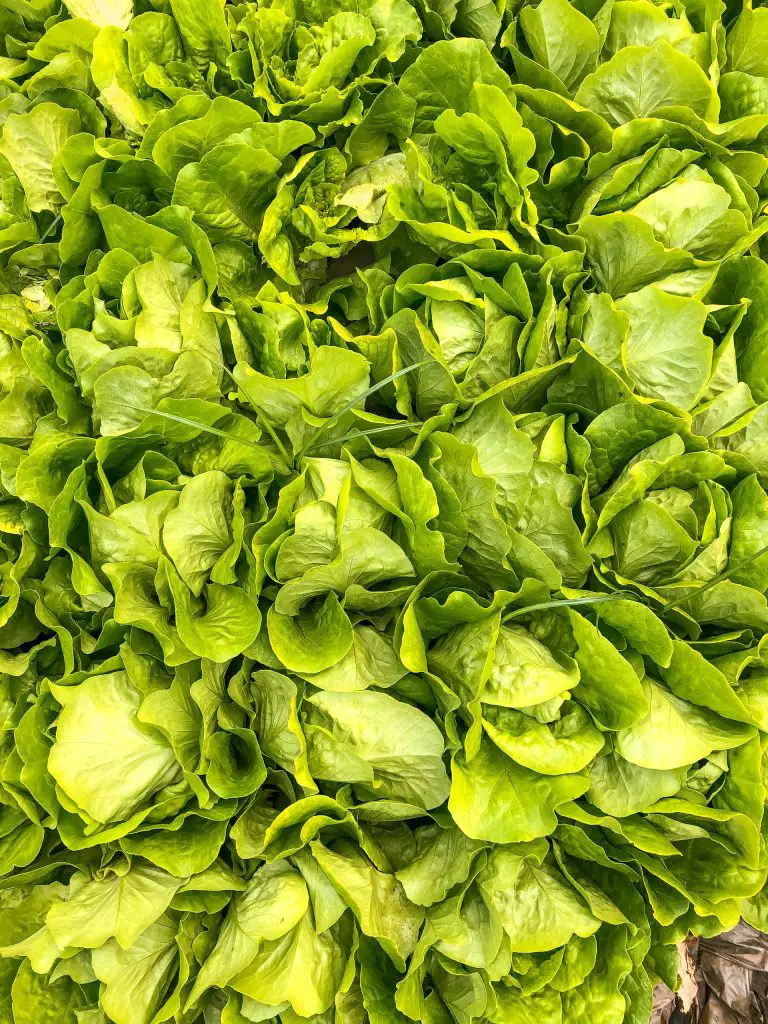
When the romaine lettuce is around 5 to 6 inches long, they fall under the baby lettuce leaves or mini head stage.
You may now begin to take use of some of the plant’s bright green leaves while allowing it to develop further. To achieve this, gather leaves from the plant’s exterior that is unharmed by rot or wilt by trimming them off around an inch from the stems.
Only a few of the outside leaves from each plant should be harvested, leaving the interior leaves to finish mature.
Although the leaves are smaller, you may grow numerous heads to have a steady supply of lettuce throughout the year.
2. Harvest The Entire Head At Full Maturity
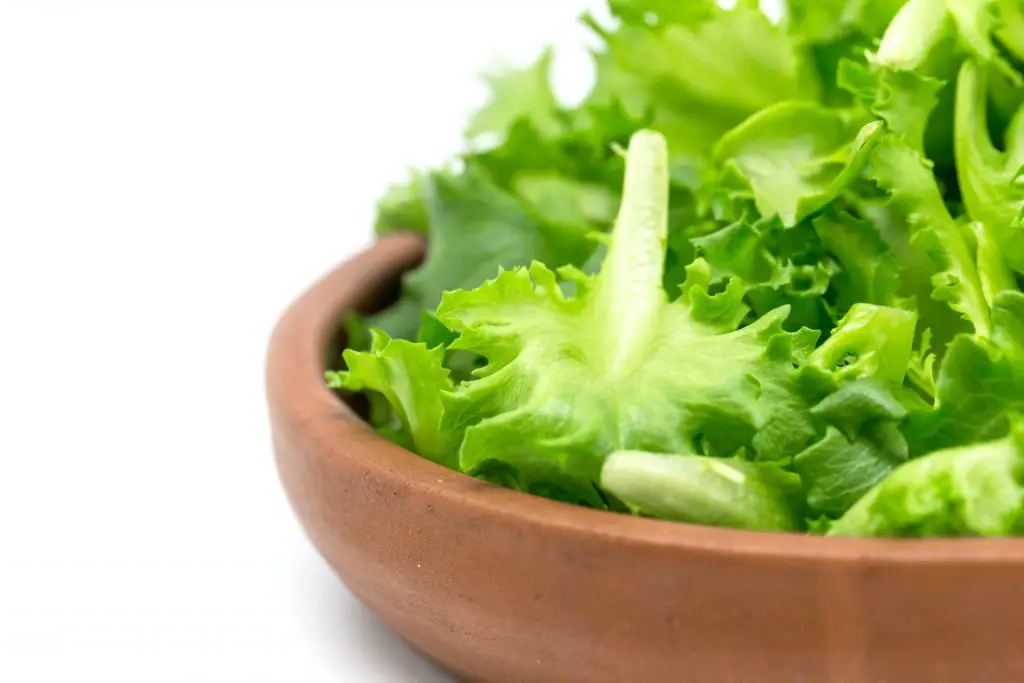
When you start to notice the leaves of your lettuce have grown up to 8 inches and are overlapping each other, then you know the whole plant has reached maturity.
Though it typically takes anywhere from 60 to 75 days, just a few weeks to mature from germination, depending on the type of lettuce you grow, like iceberg lettuce, the time taken to mature may vary.
Notice the ribs at the bottom center of the growing lettuce and when you see that it isn’t too big or thick, that is the right time to harvest the head because when you do not harvest romaine lettuce at the right time, the ribs take on a milky tint.
Although watery implies a rougher, more bitter lettuce, a firm rib shows that the romaine is mature.
It may sound tedious but checking on the whole head of your lettuce daily will aid in not overgrowing the lettuce.
How To Get A Second Harvest
You might be able to pick more lettuce from the whole heads you’ve previously harvested because romaine thrives in chilly climates with temps around 60°F.
Your romaine will begin to produce additional leaves if you trim it about one inch from the base, at the soil line.
When the plant grows approximately 5 inches tall, pick the outer leaves like you did the previous time, and once the leaflets are 6 to 8 inches high and somewhat overlapping, cut off the entire head.
If you have a shadier area of your garden where other veggies won’t thrive or if you’re looking for a gap filler between taller plants, romaine is a fantastic option because it tolerates shade better than many other vegetables.
Problems When Harvesting Lettuce

A good lettuce crop may be difficult to come by due to a number of issues.
1. Lettuce Tip Burn
This occurs when you spot your leaves turn brown on the edges.
Simply cut off the margins of the browning leaf tips with a sharp pair of scissors, then gather the remaining loosely bunched leaves or let them keep growing. Make sure your lettuce receives frequent, light watering because dehydration is frequently the culprit.
While romaine may require less water in mild climates or regions with more frequent rainfall, water is especially crucial in hotter, drier areas.
2. Flower Shoots
During the hot weather season, your lettuce may produce flower shoots and will “bolt”. In an effort to produce a second harvest, when this occurs, remove the entire except for 1 inch of the stem. Additionally, to keep the cool weather, consider covering it with shade cloth.
Another indication of your lettuce “bolting” is when it loses its fresh flavor and turn bitter. Wash your lettuce with cool tap water, clean them, pat them dry, and store them in the refrigerator. This may help in reducing the bitterness of the leaves.
3. Leaves Turning Yellow
When you see the typically dark green leaves losing their color and turning yellow, you know there is a problem.
This can occasionally be the consequence of the mosaic virus, an illness spread by insects like aphids and leafhoppers. Unfortunately, the mosaic virus cannot be cured.
Remove the afflicted plants right away to prevent the virus from spreading to your otherwise well-maintained salad garden.
Two tips for preventing these from happening are to weed frequently and use aluminum mulch as mulch.
Bonus Tips On Growing Lettuce
- When it comes to growing lettuce, consider using hanging baskets and row covers to keep pest problems such as flea beetles and aphids that come about during early spring, at bay.
- The ideal growing conditions for lettuce plants are full sun to partial shade, giving them sun exposure for about 4 to 6 hours daily, preparing raised beds can help in this situation.
- During warmer climates, plant lettuces with sun protection in mind. Do not expose the inner leaves, center leaves, and stem to extreme sun as they are not very heat tolerant.
- Heat waves in the late spring and early summer cause lettuce plants to start bolting too early.
Conclusion
Hope you found this guide on how to grow remain lettuce helpful! Use the tips mentioned in this article to care for your lettuces throughout the growing season.

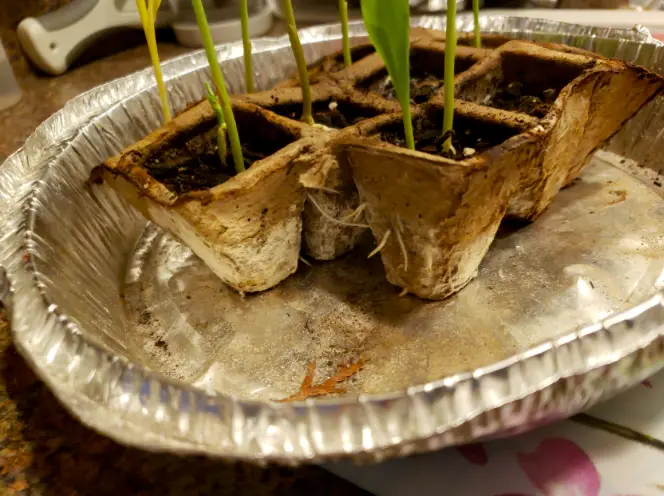

![How To Keep Foxes Away From Chickens [Practical Solutions!]](https://aboveandbeyondgardening.com/wp-content/uploads/2021/10/How-To-Keep-Foxes-Away-From-Chickens--768x511.jpg)
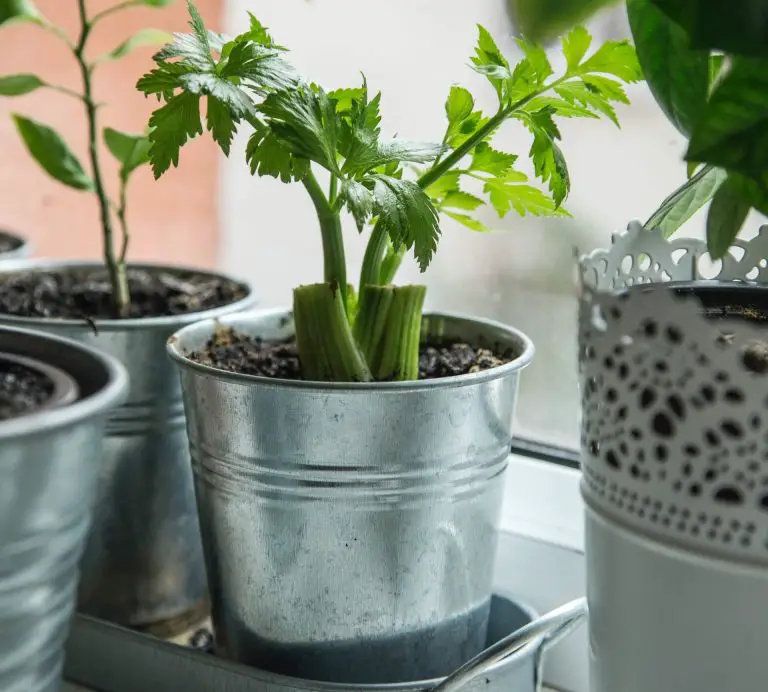
![Why Are The Leaves On My Plant Curling?[And How To Fix It!]](https://aboveandbeyondgardening.com/wp-content/uploads/2021/10/Why-are-the-leaves-on-my-plant-curling-768x502.jpg)
![13 Yarrow Companion Plants & What To Avoid! [2023]](https://aboveandbeyondgardening.com/wp-content/uploads/2022/10/Yarrow-Companion-Plants-11-768x510.jpg)
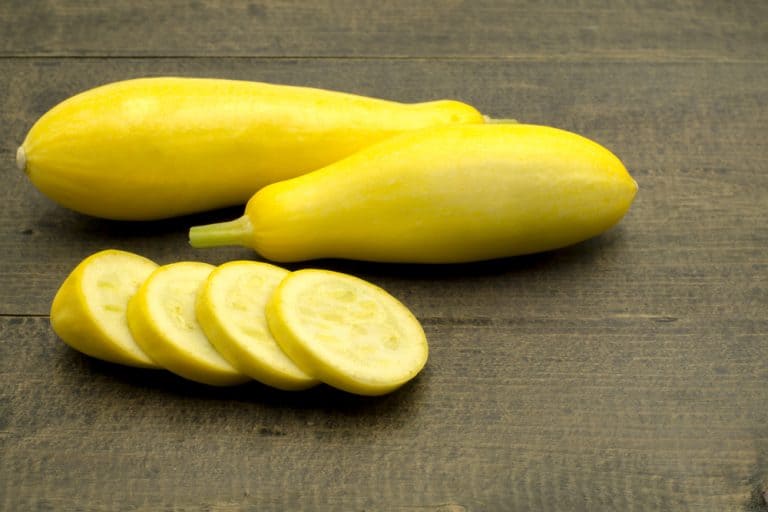
![When To Harvest Jalapeños? [+Mistakes To Avoid]](https://aboveandbeyondgardening.com/wp-content/uploads/2021/10/When-To-Harvest-Jalapenos-768x512.jpg)